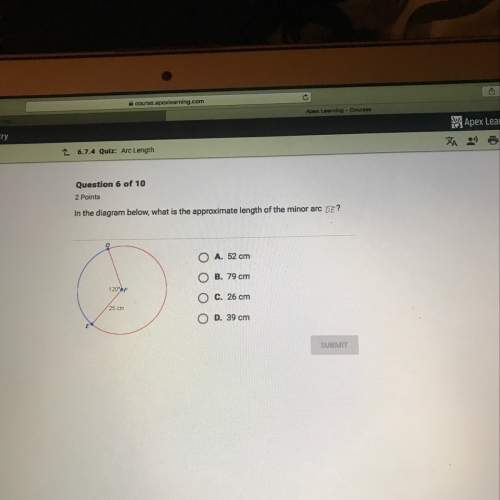
Mathematics, 08.11.2019 19:31 kyle65
Consider a binominal experiment with n=9 trials where the probability of success on a single trial is p=0.30. round yur answer to three decimal places.
a. find p(r=0)
b. find p(r> 1) by using the complement rule. the > has a line under it.

Answers: 1


Another question on Mathematics

Mathematics, 21.06.2019 23:30
Aprisoner is trapped in a cell containing three doors. the first door leads to a tunnel that returns him to his cell after two days of travel. the second leads to a tunnel that returns him to his cell after three days of travel. the third door leads immediately to freedom. (a) assuming that the prisoner will always select doors 1, 2 and 3 with probabili- ties 0.5,0.3,0.2 (respectively), what is the expected number of days until he reaches freedom? (b) assuming that the prisoner is always equally likely to choose among those doors that he has not used, what is the expected number of days until he reaches freedom? (in this version, if the prisoner initially tries door 1, for example, then when he returns to the cell, he will now select only from doors 2 and 3.) (c) for parts (a) and (b), find the variance of the number of days until the prisoner reaches freedom. hint for part (b): define ni to be the number of additional days the prisoner spends after initially choosing door i and returning to his cell.
Answers: 1

Mathematics, 22.06.2019 00:00
Table of values relation g values x, y 2,2 /3,5 /4,9 /5,13 which ordered pair is in g inverse? a(-2,2) b(-3,-5) c)4,9) d( 13,5)
Answers: 3

Mathematics, 22.06.2019 00:20
Does the construction demonstrate how to copy an angle correctly using technology a) yes the distance between points a and f was used to create circle h b) yes the distance between points f and g was used to create circle h c) no the distance between points a and f was used to create circle h d) no the distance between points f and g was used to create circle h
Answers: 3

Mathematics, 22.06.2019 03:30
Which lines are parallel? justify your answer. lines p and q are parallel because same side interior angles are congruent. lines p and q are parallel because alternate exterior angles are congruent lines l and m are parallel because same side interior angles are supplementary lines l and m are parallel because alternate interior angles are supplementary.
Answers: 2
You know the right answer?
Consider a binominal experiment with n=9 trials where the probability of success on a single trial i...
Questions

Mathematics, 15.07.2019 07:00





Mathematics, 15.07.2019 07:00

History, 15.07.2019 07:00

Chemistry, 15.07.2019 07:00


Health, 15.07.2019 07:00

Biology, 15.07.2019 07:00






Geography, 15.07.2019 07:00






